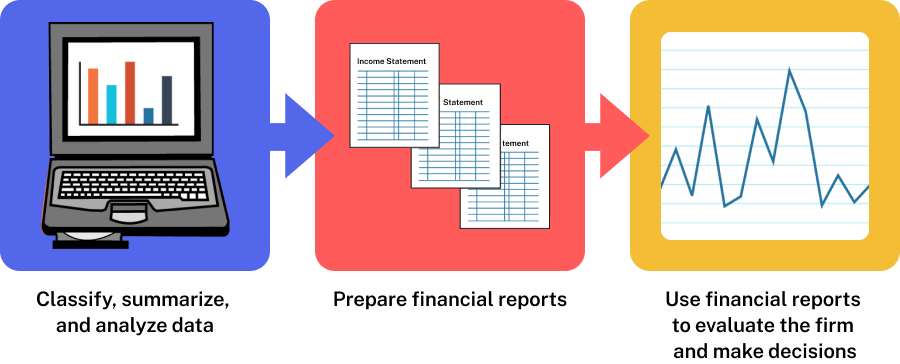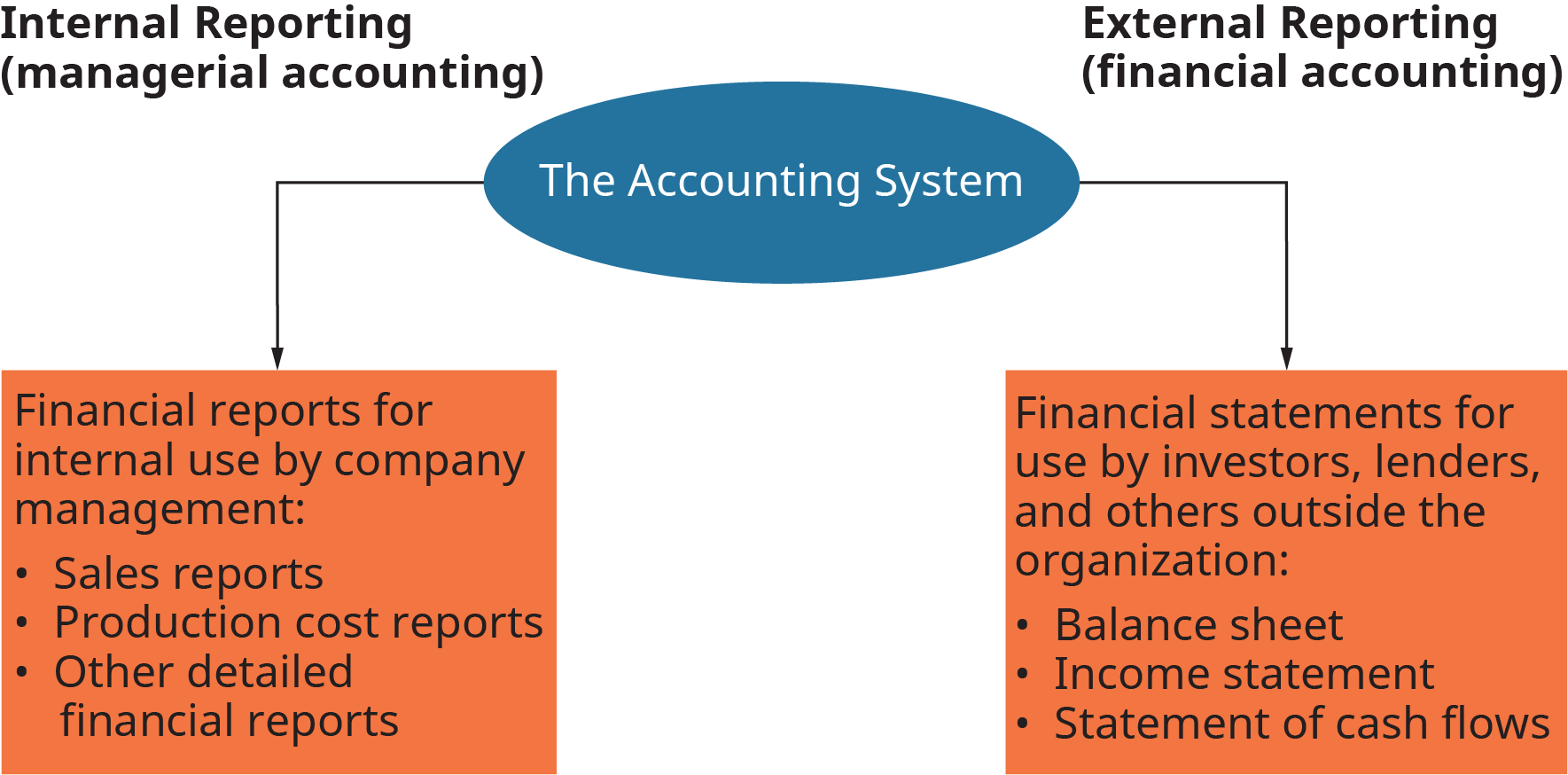- Explain fundamental financial math topics, including interest rates, financial statements, and budgeting
Why Do We Need Financial Information?

In the same way that you track your monthly spending, businesses have large groups of stakeholders who have a vested interest in the continued success of the enterprise. If a business, whether for-profit or nonprofit, becomes financially insolvent and can’t pay its bills, it will be forced to close. Financial information enables a business to track its accounts and make informed financial decisions.
Each business needs financial information to be able to answer questions such as the following:
- How much cash does the business need to pay its bills and employees?
- Is the business profitable, earning more income than it pays in expenses, or is it losing money and possibly in danger of closing?
- How much of a particular product or mixture of products should the business produce and sell?
- What is the cost of making the goods or providing the service?
- What are the business’s daily, monthly, and annual expenses?
- Do customers owe money to the business, and are they paying on time?
- How much money does the business owe to vendors (suppliers), banks, or other investors?
What Is Accounting?
Accounting is the process of collecting, recording, classifying, summarizing, reporting, and analyzing financial activities. It results in reports that tell the financial story of the organization. All types of organizations—businesses, hospitals, schools, government agencies, and civic groups—use accounting procedures. Accounting provides a framework for looking at past performance, current financial health, and possible future performance. It also provides a framework for comparing the financial positions and financial performances of different firms. Understanding how to prepare and interpret financial reports will enable you to evaluate two companies and choose the one that is more likely to be a good investment.

The accounting system shown below converts the details of financial transactions (sales, payments, purchases, and so on) into a form that people can use to evaluate the firm and make decisions. Data become information, which in turn becomes reports. These reports describe a firm’s financial position at one point in time and its financial performance during a specified period. Financial reports include financial statements, such as balance sheets and income statements, and special reports, such as sales and expense breakdowns by product line.
Bookkeeping vs. Accounting
Accounting is often confused with bookkeeping. Bookkeeping is the manual or electronic process of recording the financial transactions of a business. Accounting includes bookkeeping, but it goes further to analyze and interpret financial information, prepare financial statements, conduct audits, design accounting systems, prepare special business and financial studies, prepare forecasts and budgets, and provide tax services.
Who Uses Financial Reports?

The accounting system generates two types of financial reports, as shown above: internal and external. Internal reports are used within the organization.
Managerial Accounting
As the term implies, managerial accounting provides financial information that managers inside the organization can use to evaluate and make decisions about current and future operations. For instance, the sales reports prepared by managerial accountants show how well marketing strategies are working, as well as the number of units sold in a specific period of time.
This information can be used by a variety of managers within the company in operations as well as in production or manufacturing to plan future work based on current financial data. Production cost reports can help departments track and control costs, as well as zero in on the amount of labor needed to produce goods or services. In addition, managers may prepare very detailed financial reports for their own use and provide summary reports to top management, providing key executives with a “snapshot” of business operations in a specific timeframe.
Financial Accounting
Financial accounting focuses on preparing external financial reports that are used by outsiders; that is, people who have an interest in the business but are not part of the company’s management. Although they provide useful information for managers, these reports are used primarily by lenders, suppliers, investors, government agencies, and others to assess the financial strength of a business.
Note that both managerial and financial accounting involve preparing financial reports, but only in financial accounting do you prepare financial statements.
You may be asking “What type of accounting role is the best?” What is the best for you depends on your preferences. Remember that just because someone says they find a particular job boring, you might have the completely opposite reaction! The best way to figure out whether accounting is a profession that you would enjoy is to take some classes, talk with your accounting professors, talk to people who work in accounting, and try it out in an accounting or bookkeeping internship. Your school’s career services office can help a lot with this type of career exploration.
| Major | Median Pay with [latex]4[/latex]-year Degree |
| Accounting | [latex]$69,000[/latex] |
| Marketing | [latex]$63,000[/latex] |
| Business Management and Administration | [latex]$62,000[/latex] |
| Human resources | [latex]$58,000[/latex] |
What’s It Like to Be an Accountant?
You can view the transcript for “Pros & Cons of Being an Accountant | Salary, Work-life balance, & Q&A” here (opens in new window).
Different Kinds of Accountants
You can view the transcript for “A Day in the Life of an Accountant | Indeed” here (opens in new window).
You can view the transcript for “The Different Entry Level Accounting Jobs (6 Differences)” here (opens in new window).
You can view the transcript for “DIFFERENT TYPES OF ACCOUNTANTS YOU CAN BE” here (opens in new window).
- CEW Georgetown. “The Economic Value of College Majors,” 2015. https://cew.georgetown.edu/cew-reports/valueofcollegemajors/. ↵